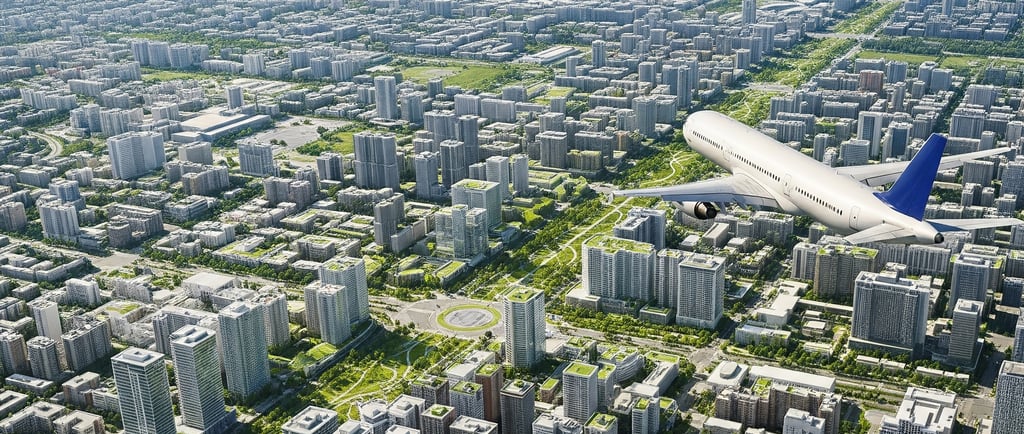The Tragedy of Flight AI-171: A Wake-Up Call for Aviation Safety and Urban Planning
Dive into the tragic crash of Air India Flight AI-171 on June 12, 2025, which claimed 270 lives near Ahmedabad Airport. This article explores the likely cause—a rare double engine failure—and the critical role of urban planning in aviation safety. Learn how dense surroundings worsened the disaster and why no-build zones and better airport layouts could prevent future tragedies.
TECHNOLOGYAVIATIONURBAN PLANNING
Bibhu Prasad Rath
7/1/20252 min read


In the wake of human progress, aviation has soared as a symbol of innovation, connecting continents and cultures. Yet, on June 12, 2025, this marvel turned tragic when Air India Flight AI-171 crashed shortly after takeoff from Ahmedabad Airport, claiming 241 passengers and crew, along with at least 29 on the ground, totaling around 270 lives lost. This disaster, one of the deadliest in recent times, compels us to examine the delicate balance between technological advancement and the environments we build around it. This article explores the causes, implications, and urgent need for reform in aviation safety and urban planning.
The Incident: A Harrowing Moment in History
At 10:49 AM IST on June 12, 2025, Air India Flight AI-171, a Boeing 787 Dreamliner en route to London, crashed minutes after takeoff, striking a medical college hostel in a densely populated area of Ahmedabad. The sole survivor, British national Vishwash Kumar Ramesh, shared a chilling account: "I can’t believe how I came out of it alive. For a moment, I felt like I was going to die too but when I opened my eyes and looked around, I realised I was alive." The crash site saw heavy barricading and police presence, as search teams recovered the black box from the wreckage, with international experts aiding India’s Aircraft Accident Investigation Bureau.
Causes and the Role of Aviation Design
While investigations continue, early indications point to a rare double engine failure or human error as possible causes. Modern aircraft, like the Boeing 787, are engineered to glide using potential energy, a testament to aviation resilience. The "Miracle on the Hudson" in 2009 saw Captain Chesley Sullenberger land US Airways Flight 1549 on the Hudson River after bird strikes felled both engines, saving all 155 aboard. Success in such cases hinges on altitude, airspeed, aircraft type, and proximity to a safe landing area. For Flight AI-171, the low altitude during takeoff, coupled with no viable landing space, sealed its fate.
The Critical Influence of Urban Layout
This tragedy underscores the layout of Ahmedabad Airport and its surroundings. Airports typically feature Runway Safety Areas, but for emergencies beyond these zones, the adjacent land use is vital. The presence of high-rise buildings, including the hostel, turned a potential emergency into a catastrophe. Current regulations focus on height restrictions, yet they overlook population density. Historical moves, like Hyderabad’s airport relocation, suggest a need for no-build zones within 5 km, ensuring flat grasslands or water bodies for emergency landings, as seen in successful cases like the Hudson River.
A Path Forward: Safety Through Planning
To prevent future disasters, urban planning must evolve. Enforcing low-density or no-build zones within 5 km of airports, and considering relocations where feasible, could save lives. Collaboration among policymakers, planners, and aviation authorities is essential to integrate safety buffers, drawing inspiration from global examples. The loss of Flight AI-171 serves as a poignant reminder: while technology advances, our urban landscapes must adapt to protect those who take to the skies.


Bibhu Prasad Rath
A.G.M, NTPC
